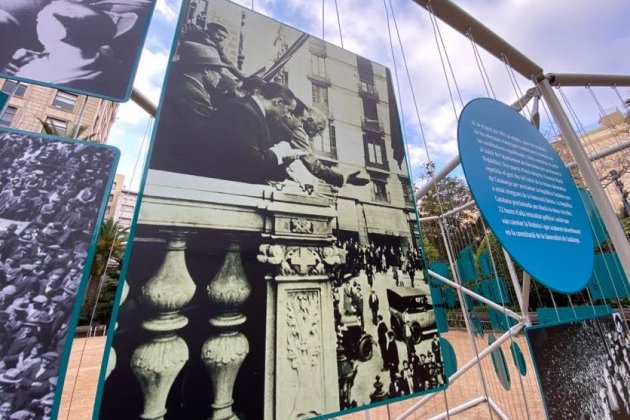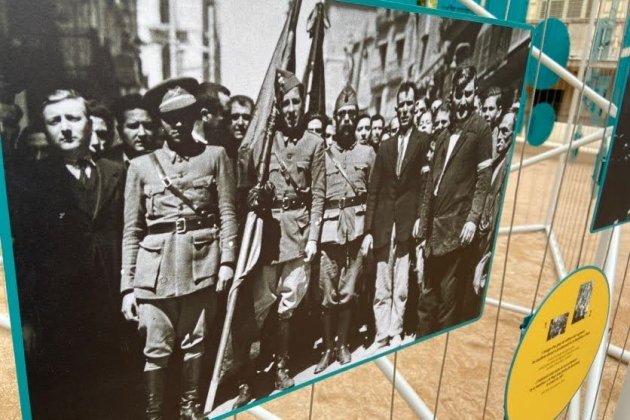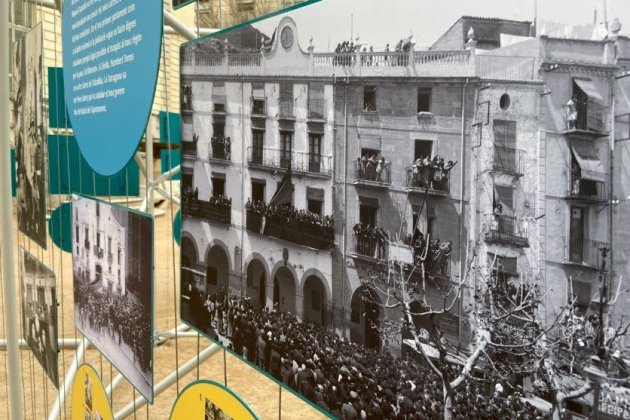The images are 90 years old, and they are iconic: the magnetic Catalan political figures of Francesc Macià and Lluís Companys, in Barcelona's Plaça Sant Jaume, proclaiming the Catalan Republic on April 14th, 1931. And it is because that intense political focus of a key historical day is so well known, that the exhibition Three Days in April, which can be visited in the gardens of Barcelona's Palau Robert until May 5th, choose another emphasis: it shows how that "memorable moment of joy", as defined by Jordi Font Agulló of the exhibition organizer Memorial Democràtic, was experienced in different places throughout Catalonia.

Republican enthusiasm across the country
"When the people are happy they don't need blood, wine or to throw stones," recalls a quote from writer Teresa Pàmies, referring to how that historic day was experienced in the town of Balaguer. The exhibition, curated by historian Oriol Dueñas, aims to show how the short-lived proclamation of the 1931 Catalan Republic by Macià, coinciding with republican election victories, aroused a wave of enthusiasm throughout the country.
A few words - "Catalans: Interpreting the sentiments and yearnings of the people who have just given us their vote, I proclaim the Catalan Republic as an Integral State of the Iberian Federation" - which after the victory of the republican candidates two say before, served to overthrow a monarchy that had wasted away after Spain's 1920s dictatorship under the general Primo de Rivera. The Catalan Republic lasted three days, those referred to in the exhibition title, after which it was agreed with representatives of the provisional government of the Second Spanish Republic, that Macià would preside over a provisional Government of Catalonia pending the approval of a Statute of Autonomy.

The Republic - it was regarded across broad sectors of society as a word full of significance linked to a future of freedom and democracy, of social and national progress. For this reason, from Figueres to Tortosa, from La Seu d'Urgell to Vilanova i la Geltrú, enthusiasm spread through the streets, after the local proclamations of the new regime. That is why Dueñas has dug into a range of regional and local archives to show the burst of hope and peaceful joy in the towns and cities of Catalonia beyond the eyes of Barcelona, through the photographs of well-known professionals but also of anonymous and amateur portraitists. In accordance with this spirit, the assembly of the exhibition is preparing to tour Catalonia, with an installation that is ephemeral, exciting and fragile, although not weak, as was the new regime that was born on 14th April 90 years ago.

Official commemoration at the Casas school
This Wednesday evening, the Catalan government commemorated the 90th anniversary of the proclamation of the Catalan Republic, in an event chaired by acting vice president of Catalonia, Pere Aragonès, and justice minister, Ester Capella, at the Escola Casas, in the Clot district of Barcelona - a school opened by president Francesc Macià in 1933. The event featured dramatized readings of texts by Aurora Bertrana, Josep Pla and Maria Aurèlia Campany, among others, and music from Cesk Freixas and Gemma Humet and a vocal octet from the Liceu Conservatory to perform the national anthem of Catalonia.

